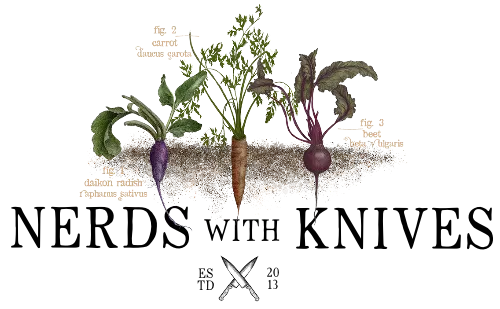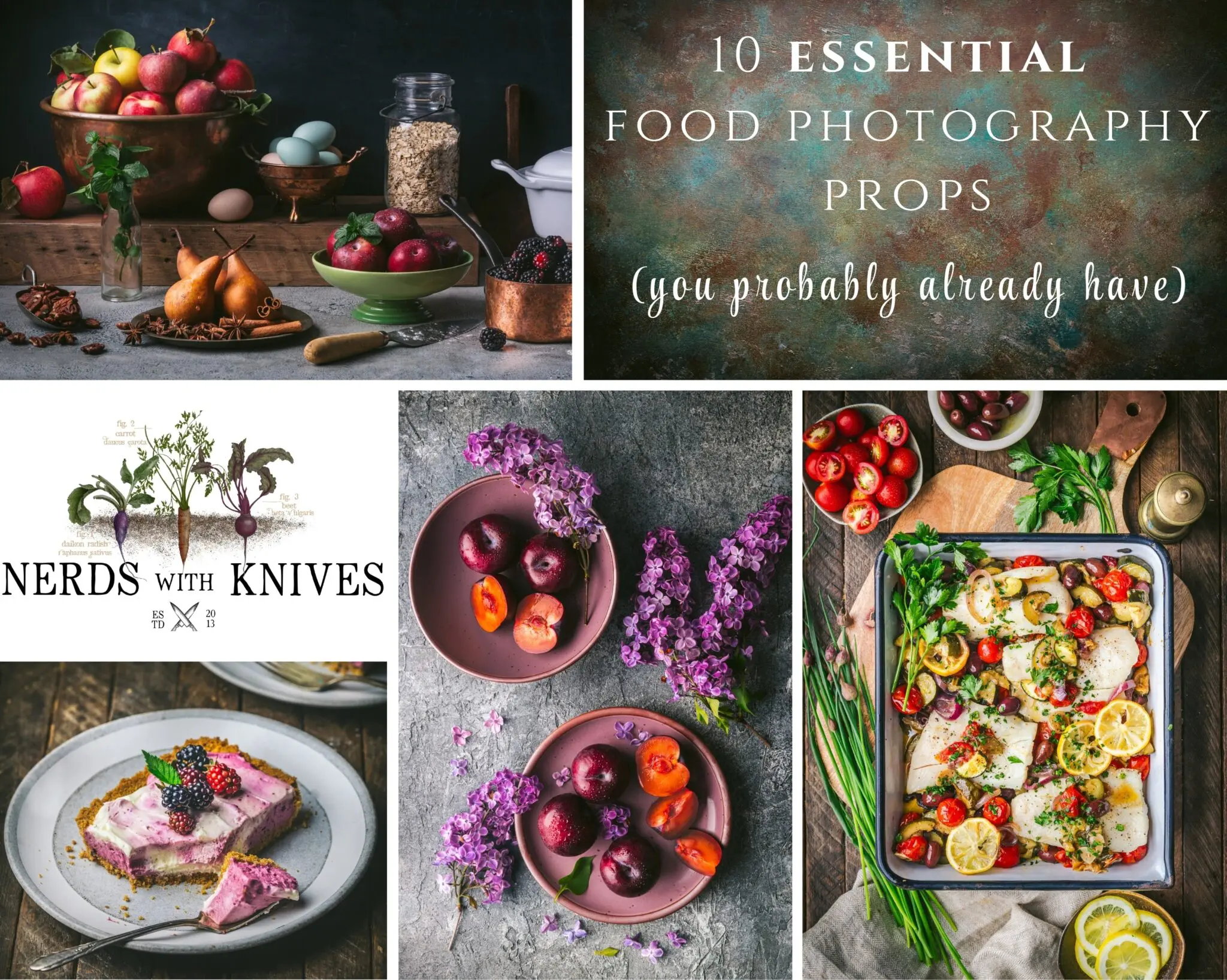
If you want to step up your food photography game (but keep your budget in check), look at what you already have available to you. You mostly likely already have quite a few of these, if not all.
The key is to think like a photographer (or really a food stylist/prop stylist). An item might look boring on a shelf, but really come alive in front of a lens.
Your own house (and your family and friend’s houses) are a great place to start looking for props. And if you’re ready to start purchasing items to build your prop collection, check out our two guides, one for dishware & bakeware and the other for drinkware and glassware!
#1 salad and dessert plates
When it comes to plates, small is better than large. The goal is to keep the focus on the subject, the food. Dinner plates have too much space to fill, which is distracting. Salad plates are the perfect size for showcasing a recipe.
Neutral toned, matte plates are ideal (bonus points for stoneware, speckles and rustic shapes), but any small plate is a great starting point. Try to avoid plates with words or bright, busy patterns.
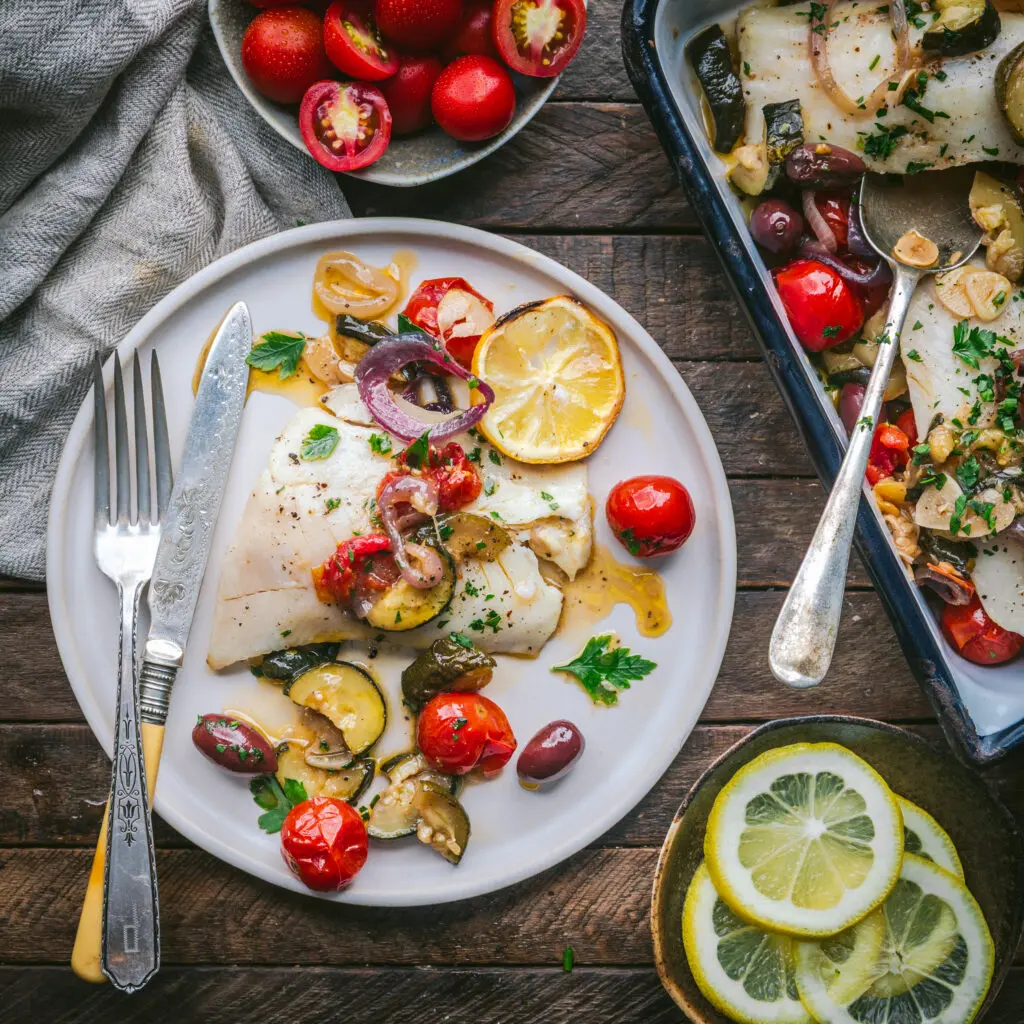
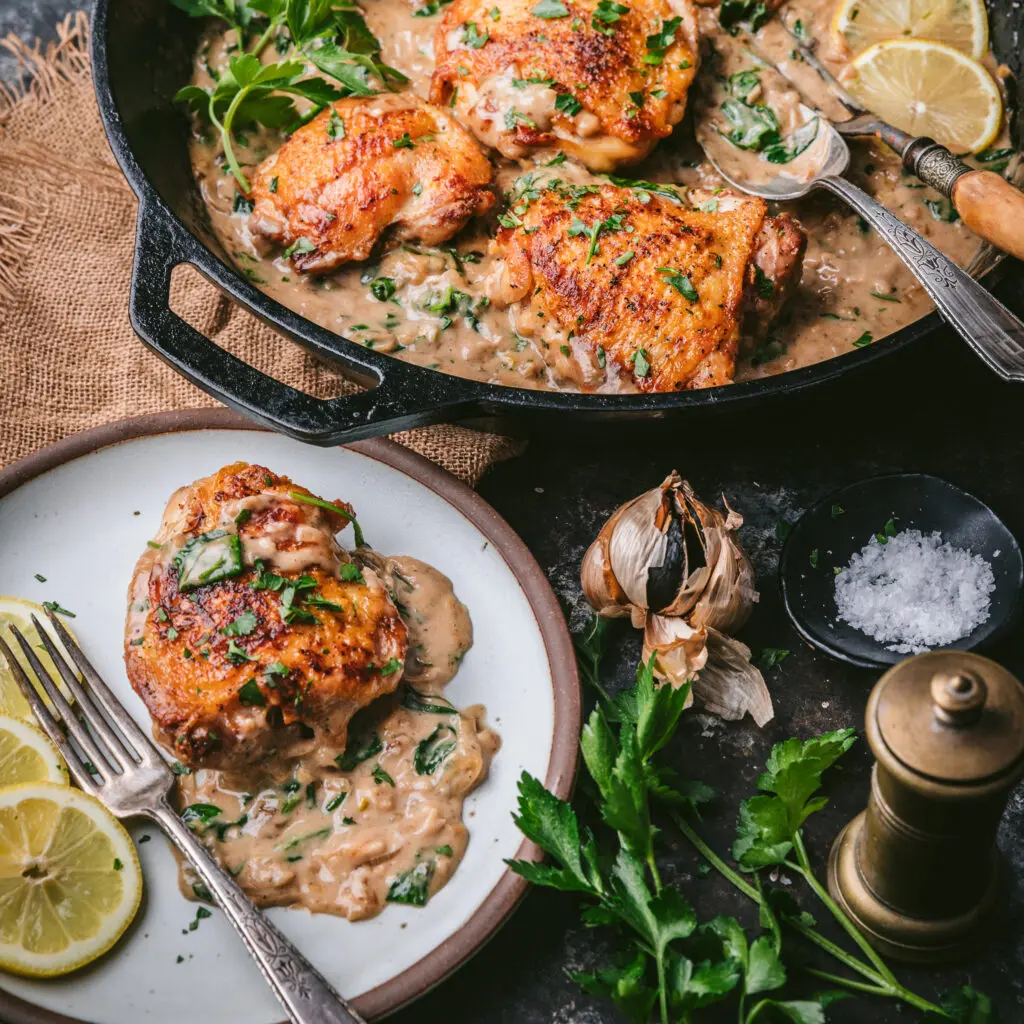
#2 Wooden cutting boards
Having a wooden element in your shot is an efficient way to give a warm, rustic, farmhouse-style look to your photo. Luckily, most of us have a wood chopping board in the kitchen, so try using it as a prop.
If it’s small, you can style it to tell the story of the ingredients or garnish (for example: a few lemon halves and knife). If it’s large, you can use it as a surface or a base for smaller plates.
We use a lot of medium-sized boards with handles, but any wood slab can be useful. Avoid super glossy wood, or pieces with words on them.
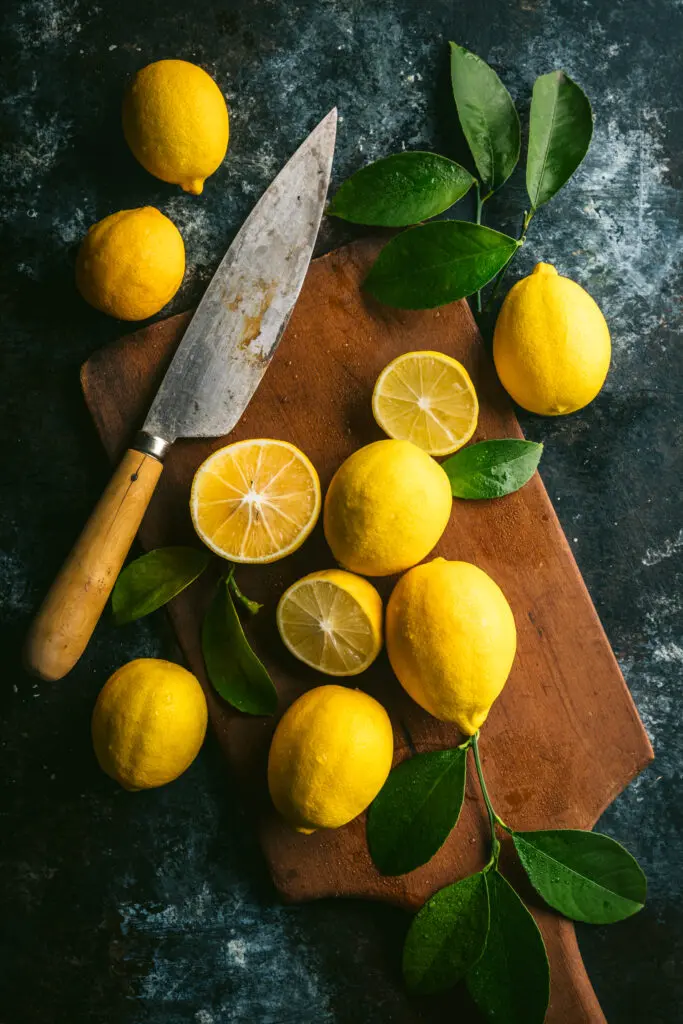
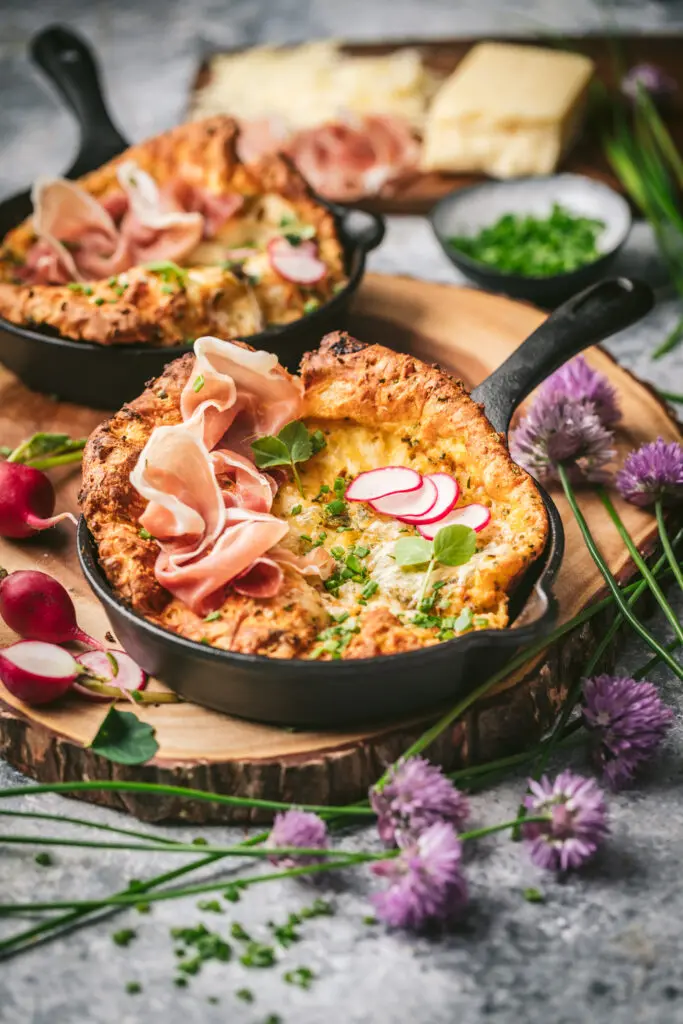
#3 Parchment or Wax Paper
Parchment comes in either pure white or a natural color and both are useful for food photography. If you crumple a piece up and then spread it out, it creates an instant texture which adds softness and visual interest to a shot. Wax paper has a beautiful, soft translucency. Tear the edges (rather than cut them with scissors) for an even more rustic look.
You can layer it on top of or under other props (like cooling racks or sheet trays for baked goods). Use torn pieces to balance out a composition. Avoid parchment that have printed guides.

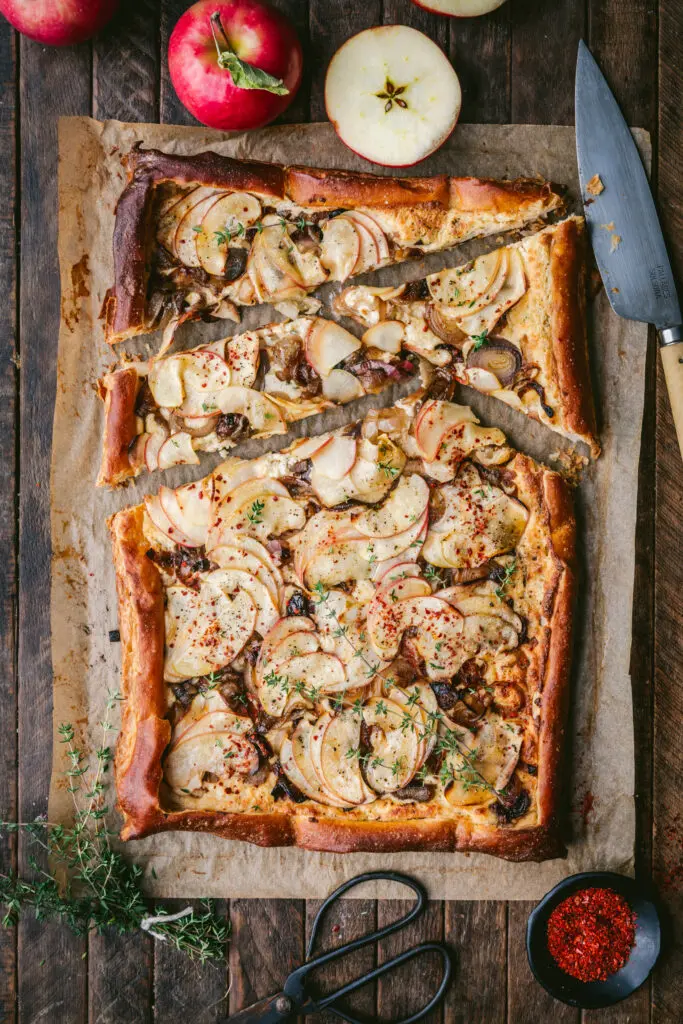
#4 napkins, placemats and linens
Napkins, tea towels, placemats and other fabrics add beautiful softness, color and texture to a photo. You can use them to create a shape, like the burlap placemat under our gochujang chicken, or to soften a hard edge, like this box of farm fresh vegetables. Its also useful for indicating something is hot, like wrapping the handle of a skillet, or under a pan.
Neutral colors are the most versatile, but sometimes a pop of color is just right. Stick to natural materials like cotton, linen and burlap. Plain or stripes can work well. Avoid anything with text, or too strong a pattern.
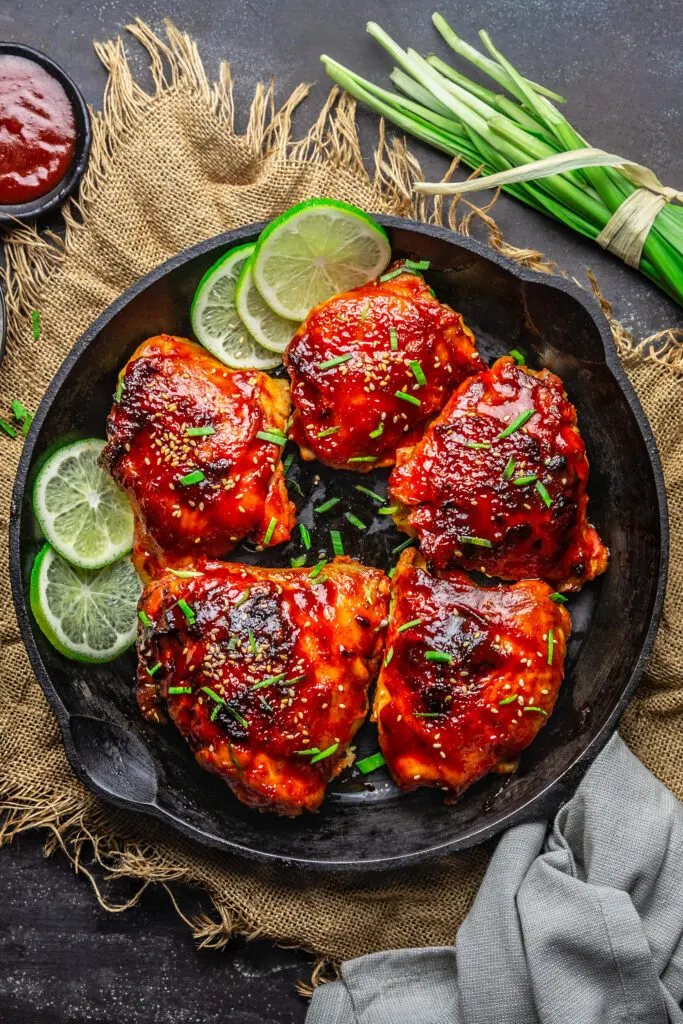

#5 old baking trays
Do you have any old baking trays that have that dark, burnt-on crud that’s so annoying to scrub off? Don’t throw them away, use them as photo backgrounds! They may look horrible in the kitchen, but they’re fantastic in photos.
If you have some that just aren’t dark enough, you can help them along by rubbing them with a very light coating of oil and heating them in a hot oven for 30 minutes or so. Repeat this process as needed until the tray is dark enough for you.
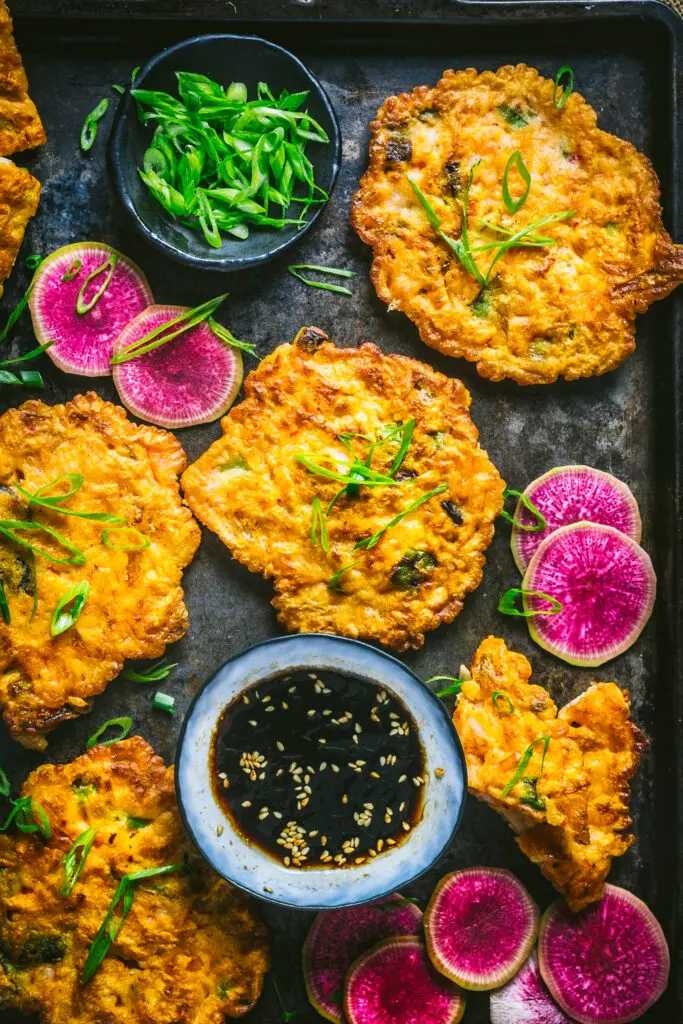

#6 Vintage flatware
Did you inherit a relative’s old silver (or silver plate) flatware? Maybe it’s in a box somewhere and you polish it once or twice a year for a holiday? Well, you now have a new use for it. And even better, you don’t have to polish it for photography. In fact, lightly scuffed and tarnished silver has a gorgeous patina in photos, whereas polished silver is problematically reflective.
If you don’t own any vintage flatware, the good news is you can find it at just about any antique or thrift store. It’s usually incredibly affordable (I’ve seen them for $1 each) if you buy single pieces (not a full set). I think mismatched vintage pieces look fantastic, adding a certain whimsy and visual interest.
For modern flatware, matte finishes look great in photos, especially black and gold. Avoid anything extremely shiny. Knives and spoons are especially prone to problematic reflections.
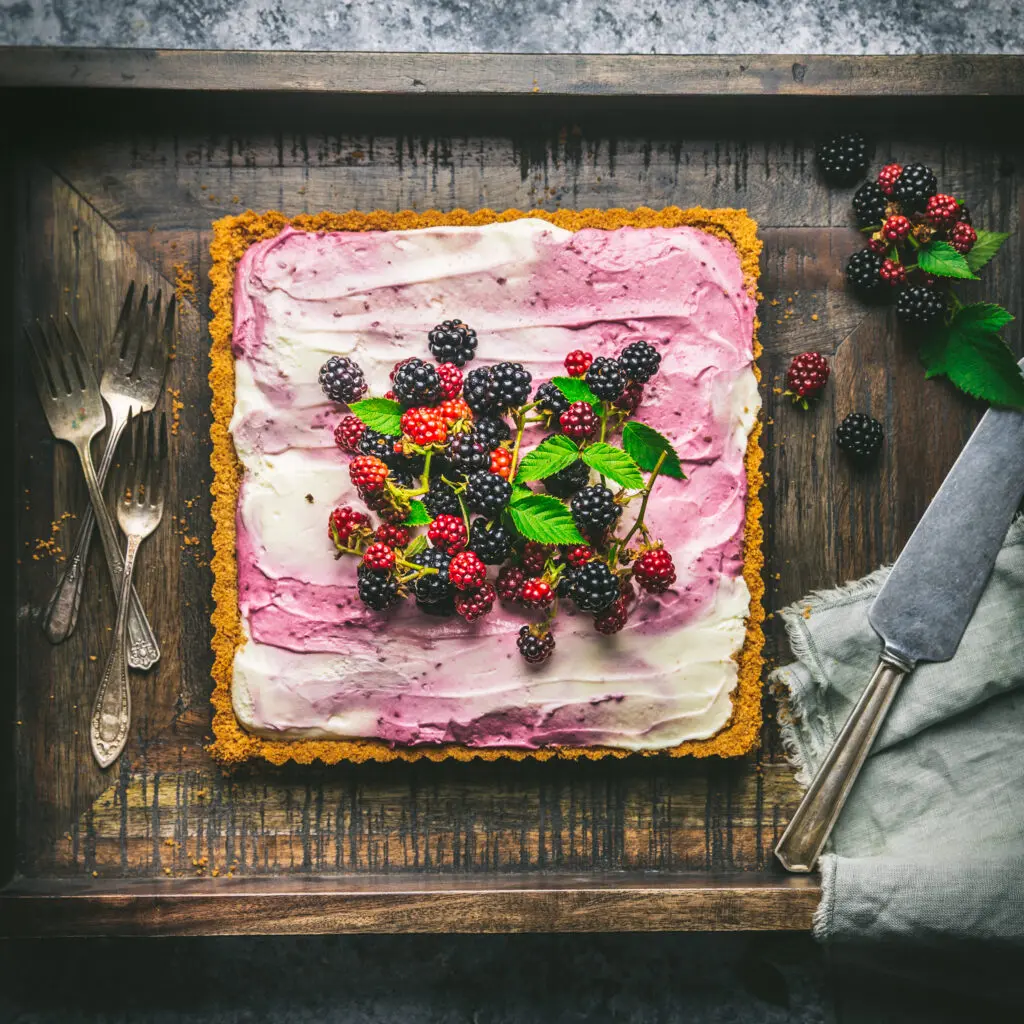
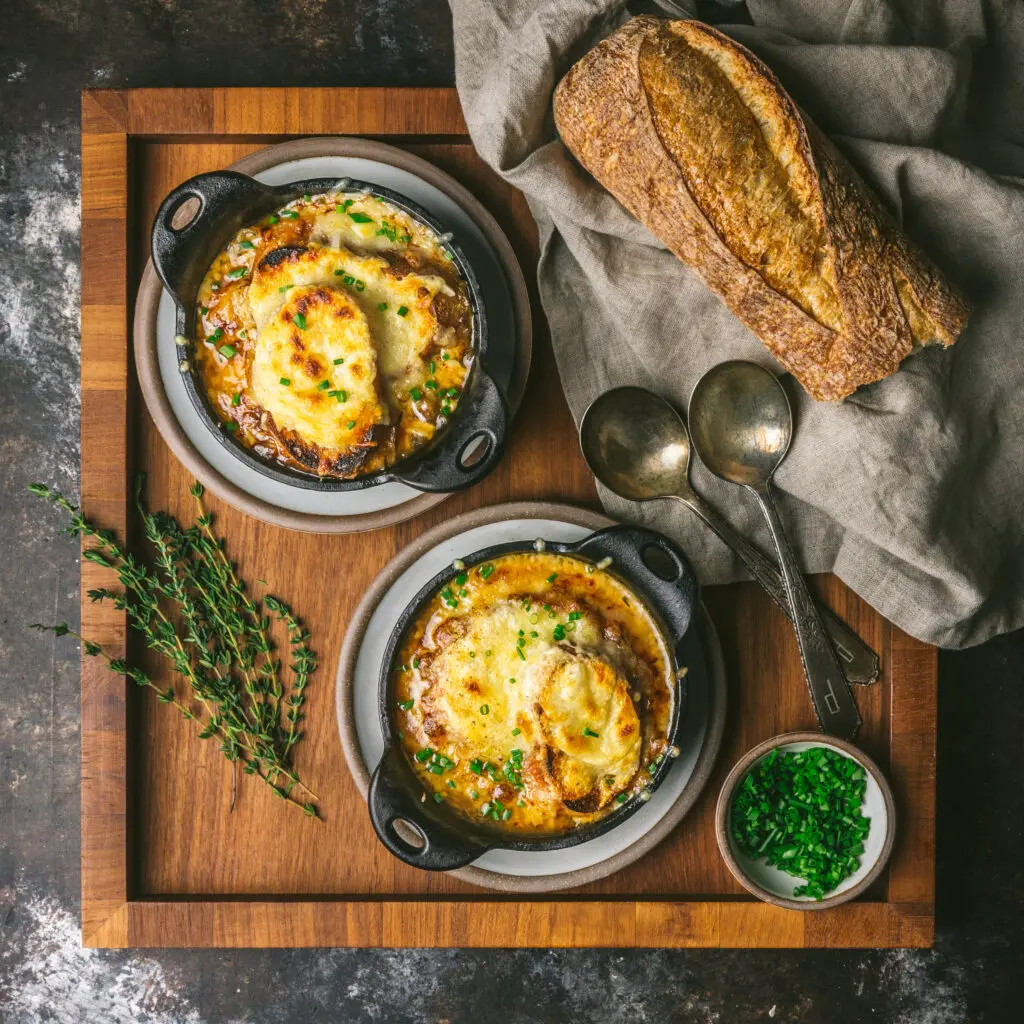
#7 Clear, thin-walled glasses
Simple, thin water glasses work well for shooting drinks, but they’re also perfect for layered desserts like parfaits. This glass works so well because it doesn’t show the distortion or discoloration that can happen with thicker glass.
And they’re not expensive! We use these CB2 Marta glasses, which are about $2.50 each. One drawback to this style of glass is the reflections. The smooth surface will show your light source (and even you and your camera). Lately when we shoot beverages, we prefer to use glassware that has some texture. Either an etched design (common on vintage glassware), or molded glass, like this CB2 Clarion Double Old-Fashioned Glass.
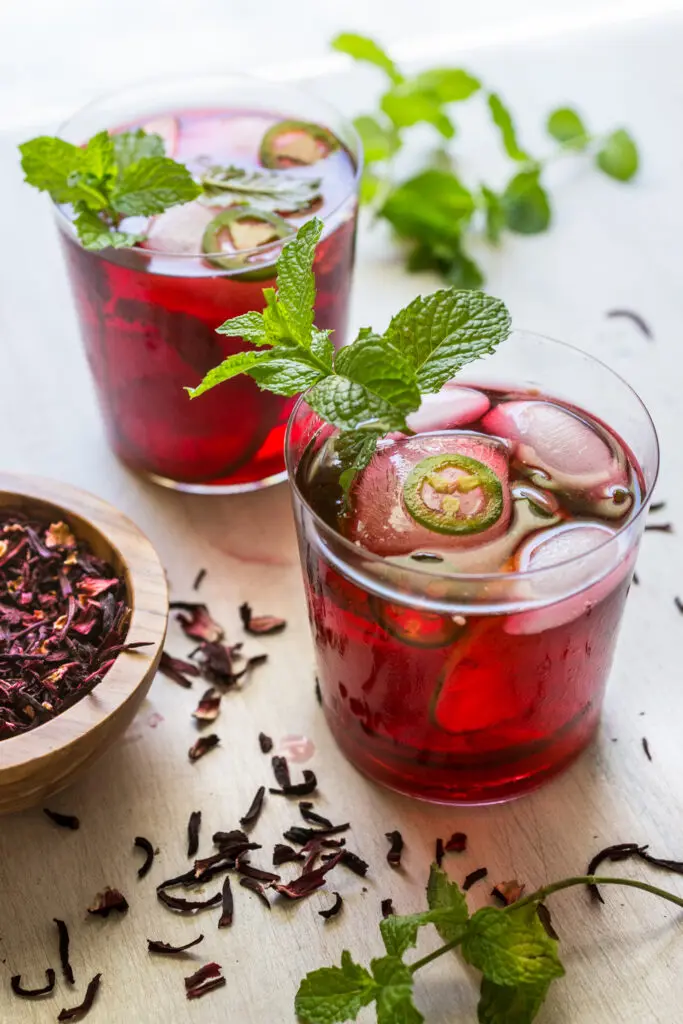
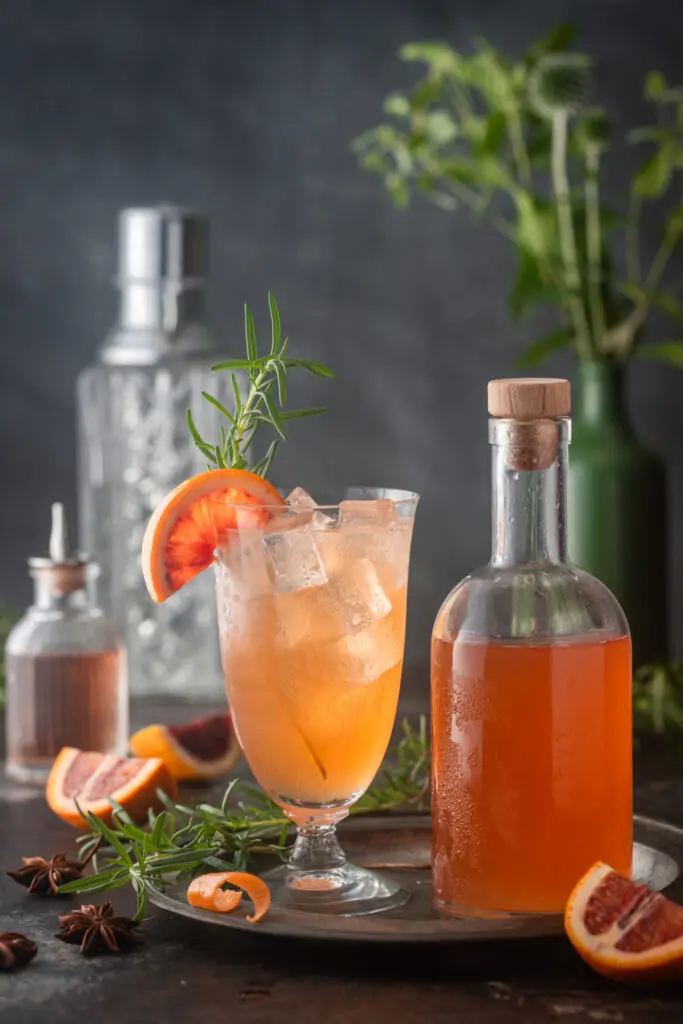
#8 clear jars and bottles
Jam jars (bonjour Bonne Maman), glass yogurt pots, Ball canning jars. These all make fantastic props for food photography. Even before I started photographing recipes, I couldn’t resist collecting cute jars. They’re useful in the kitchen for mixing up salad dressings, syrups and marinades, but with the labels cleaned off, they give a rustic, homey look to photographs.
We most often use Weck jars, which have beautiful shapes and a wide variety of sizes, but any clear jar or bottle can work. Avoid colored jars or jars with distracting text (unless that’s a style choice for your shot).
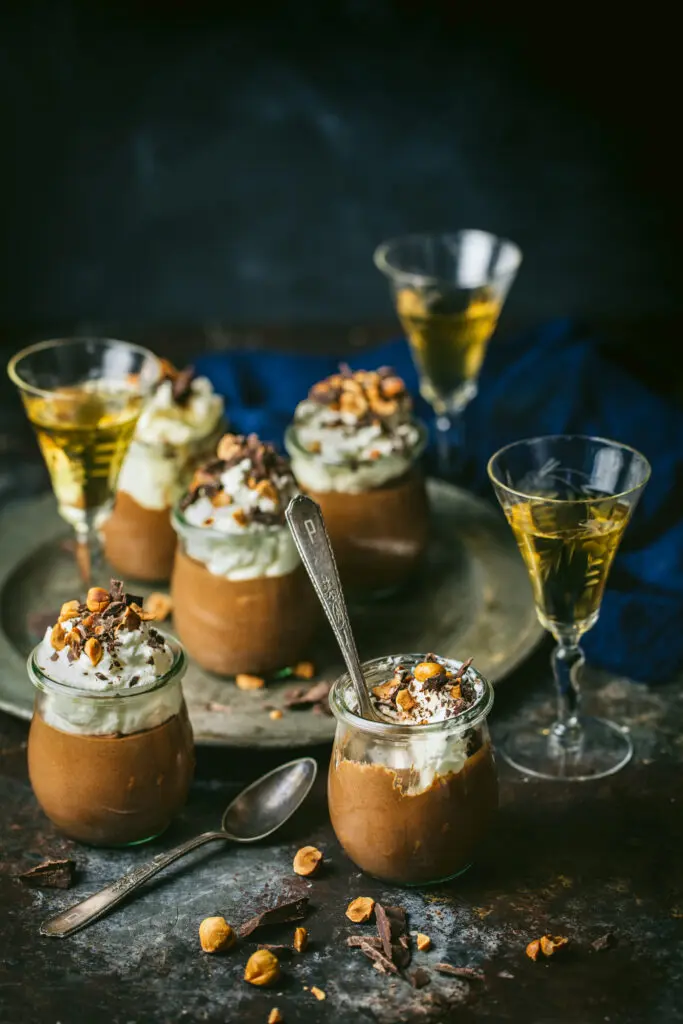
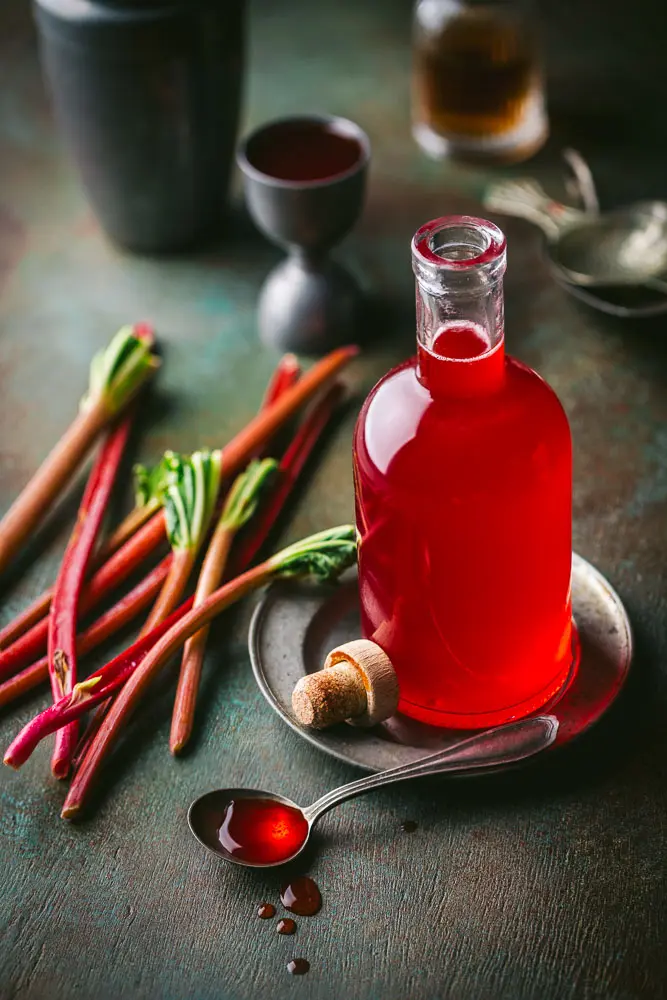
#9 trays and boxes
Trays are great for grouping dishes or ingredients together and adding order to a composition. You can use antique or modern trays, metal or wood. Wood boxes are great for creating dramatic shadows on their contents.
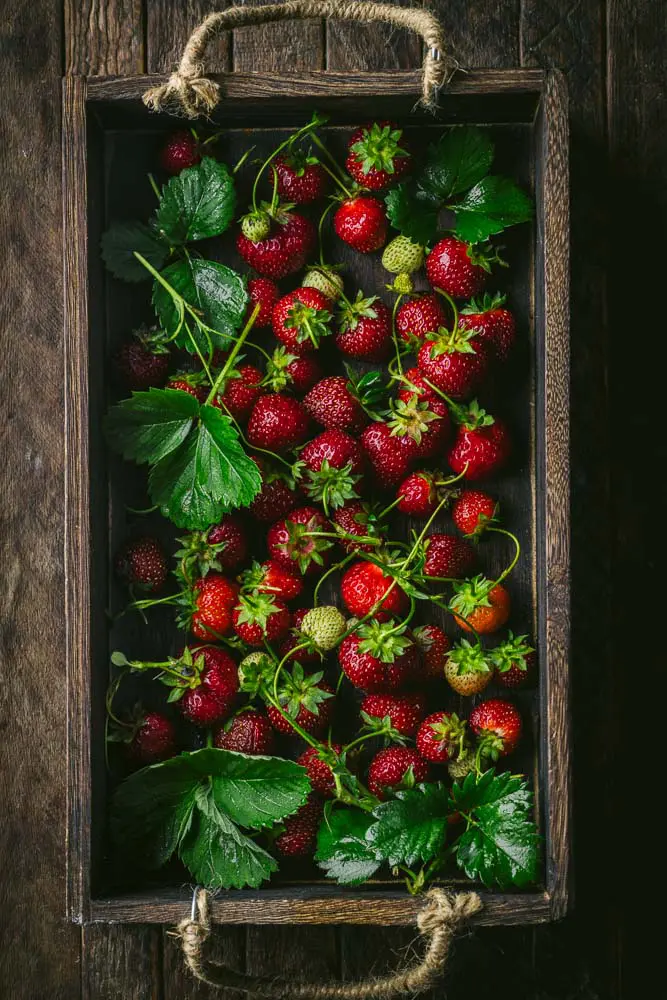

#10 Miscellaneous household items
There are probably dozens of items in your house that would make great props. Here’s a list of just a few that we’ve used over the years.
- Butcher’s twine and string — great for tying up stacks of cookies, bars, and sandwiches, or tying vegetables together for a “just-picked” look.
- Measuring cups & spoons — for baking and dessert shots, shows the process of cooking.
- Old books — books give a cozy, warm look that works well with baked goods.
- Newspaper — similar to parchment and wax paper, newspaper makes an interesting surface for overhead shots.
- Candles & oil lamps — add a cozy, sultry and sophisticated look.
- Vases — can hold flowers, greenery or utensils. They can add height to fill the top of frame in the background in vertical shots.
- Flowers — beautiful blooms add freshness and color to both overhead and straight on shots.
- Glass jars of flour, beans, grains — add texture and visual interest to the background of shots that use those ingredients.
- Twinkle lights — in soft focus in the background, twinkle lights give a magical, festive look to holiday shots.
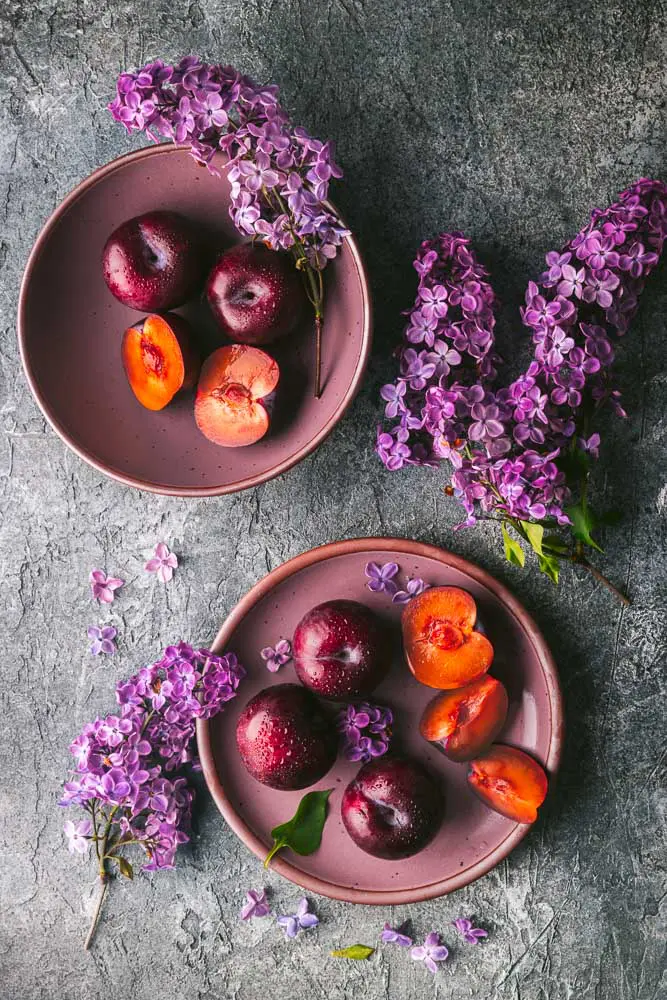
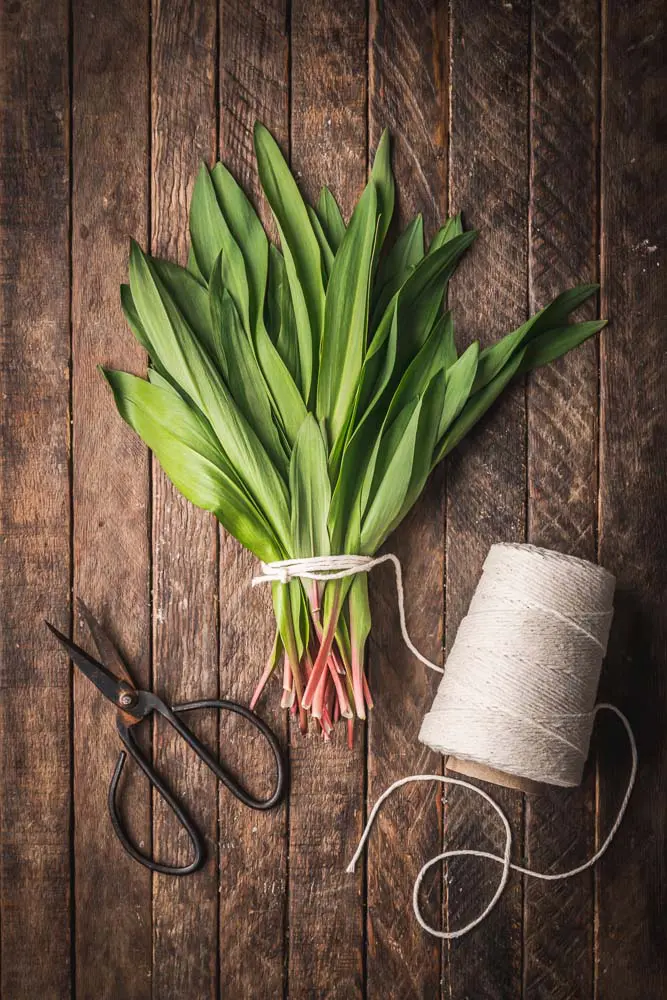
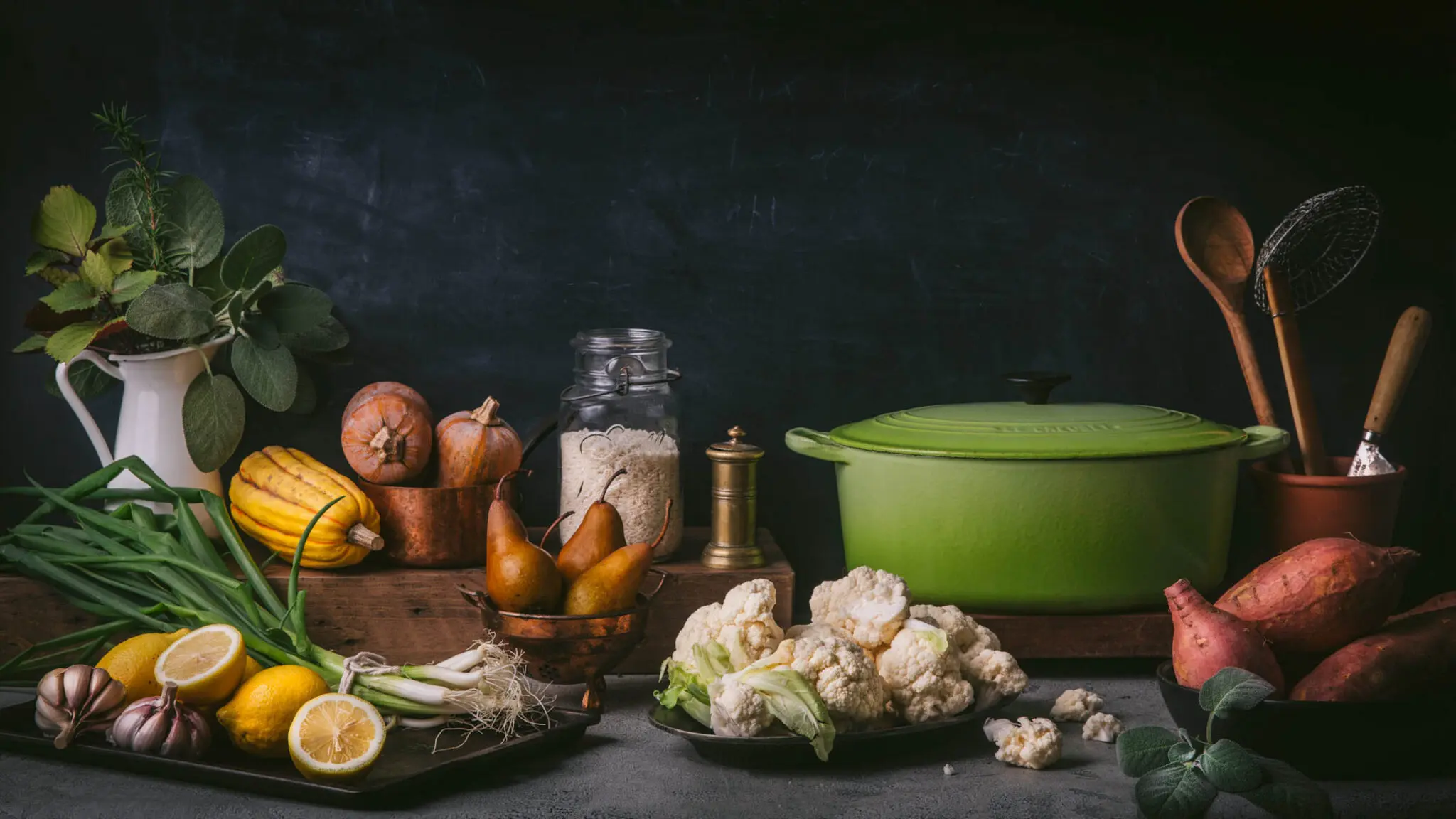
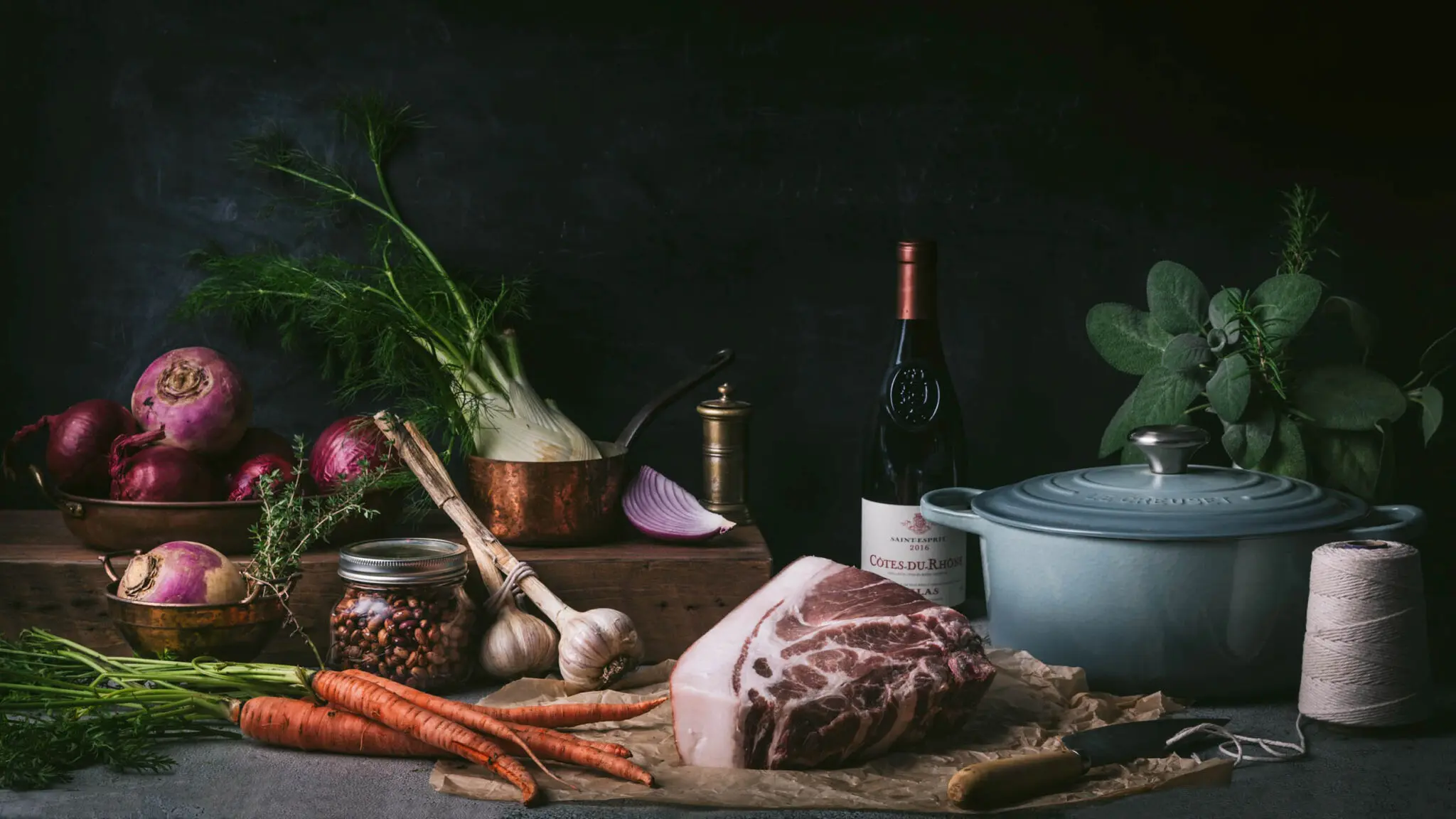
So before you go out and spend a ton on money on food photography props, practice with what you already have! Every photographer has their own unique style and aesthetic, and it will take time to figure out what works best for you.
Try new things and experiment. Once you have a sense of the kinds of photos you want to take, you can start filling in the gaps in your collections slowly and purposefully.
If you’re ready to start building your food photography prop collections, check out our other guides!
Guide to the most useful props for food photography (dishware & bakeware)
Guide to the most useful props for food photography (glassware & barware)
